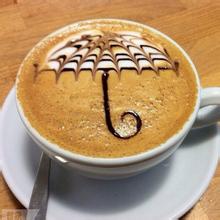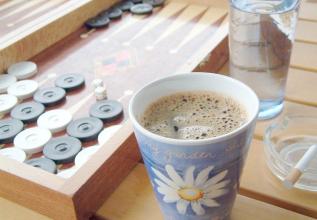Introduction to the flavor and taste characteristics of fragrant, pure and slightly sour El Mercedes Manor coffee
Built on a peninsula that juts into the Atlantic Ocean, this ancient city occupies the end of a mountainous island with a steep slope dividing it into the city above
El Salvador
El Salvador
And the city below (upper, lower), can be reached by lift or climbed on foot. The walls remain arched along the steep slope. The upper city overlooks the activities of the city below. The upper city has baroque buildings and many small squares, communal buildings, dwellings and gardens. They are quaint and elegant, better preserved than downtown. The streets here are numerous and narrow, and there are various patterns on the roads, which are paved with black and white stones. Downtown, near the port, is the Modro Market, where houses and activities revolve around the port and commerce, where the slave trade was once very popular, and now it's a very busy handicraft market. In the Pelonio, San Antonio and Soderai districts of the ancient city of Salvador, there are more than 3000 ancient buildings, among which Pelonio is the most representative of the ancient city. Pelourinho District, which is the largest building complex built in Latin America during European colonial rule, many buildings have ancient Portugal architectural style, except music, which can best reflect the local food. Brazilian cuisine is already very rich, Bahia's diet is more creative. The Portugal brought meat and desserts, the Indians contributed cassava, nuts and cocoa beans, and the West Africans added palm oil, herbal peppers and coconut milk. Moqueca is a dish of soft-shelled crab and shrimp sautéed in African palm oil over low heat with herbs, tomatoes, garlic, onions and coconut milk, served with rice with coconut milk. Considered to be used only in sweets and drinks, the Bahians actually mix coconut milk with chili and turmeric to cook rice, which is delicious. Salvador has preserved many famous Renaissance buildings, and there are still many colonial buildings, including Brazil's first cathedral and the oldest medical school. There are a large number of sixteenth century buildings in the city, and religious buildings, many of which are decorated with seventeenth and eighteenth century carvings, and many of which are striped with colored clay, reflecting colonial characteristics. The church of this city is very much, according to statistics can amount to more than 160, it is the city with the most churches in Latin America, there are Gothic churches with bright lines and strange shapes; Baroque churches with undulating lines and dynamic, luxurious and gorgeous; the largest church is Vasilia Church; the oldest is the church of Our Lady Conceicao; the most magnificent church of Saint Francis de Asis
Like Guatemala and Costa Rica, coffee in El Salvador is graded according to altitude, with the higher the altitude, the better the coffee. The best brand is Pipil, the Aztec-Mayan name for coffee, which has been endorsed by the Organic Certified lnstitute of America. Another rare coffee is Pacamara, a hybrid of Pacas and Maragogype. The coffee is best grown in western El Salvador, adjacent to Santa Ana, near the border with Guatemala. Pakmara coffee is full of particles, but the aroma is not strong. Features of Salvadoran coffee:
Salvadoran coffee is a Central American specialty, light, aromatic, pure and slightly acidic.
Flavor: balanced taste, excellent texture
Recommended Roasting Method: Medium to Deep, Multiple Uses Salvadoran Coffee Market:
The best quality Salvadoran coffee is exported from January to March, and 35% of the extra hard beans are exported to Germany.
In 1990, the government of El Salvador privatized part of the coffee export industry, hoping to increase the rate of coffee in the export market El Salvador, located in northwestern Central America and bordering the Pacific Ocean in the south, is one of the birthplaces of ancient Mayan civilization. The volcanoes, plateaus, lakes and bathing beaches along the Pacific coast are all very pleasant. But El Salvador is best known for its unique, mild-tasting coffee.
El Salvador is one of the small countries of Central America and has a very dense population. People love coffee here. Salvadoran coffee tastes well balanced. Salvadoran coffee exports account for 40 per cent of national exports. The best quality coffee is exported from January to March each year, and 35% of the extra hard beans are exported to Germany. In the early 1990s, El Salvador's national economy was greatly damaged or even destroyed due to the impact of war. The coffee production decreased from 3.5 million bags in the early 1970s to 2.5 million bags in 1990~1991

Important Notice :
前街咖啡 FrontStreet Coffee has moved to new addredd:
FrontStreet Coffee Address: 315,Donghua East Road,GuangZhou
Tel:020 38364473
- Prev

Fragrant and delicious Coffee from Los Congo Manor in Nicaragua introduction to boutique coffee
Managua, the capital of Nicaragua, is located in the west of the border, on the south bank of Lake Managua, hence its name. The northwest is 140 kilometers away from the Collinto seaport on the Pacific coast. 55 meters above sea level. It is a Spanish city with beautiful scenery. Because it is located to the east of the Pacific volcanic active seismic belt, there have been four strong earthquakes in the city in the past 100 years, including one in December 1972.
- Next

Introduction to the coffee flavor and taste characteristics of Nicaraguan Tianyi Manor with excellent sense of balance
Since July 1927, Augusto. Cesar. Sandino led the people in a guerrilla war against the US occupation, forcing the US military to withdraw in 1933. On February 21, 1934, the Commander of the Nicaraguan National Guard, Anastacio. Somocha. Garcia assassinated Sandino at the behest of US President Roosevelt. He became president in 1936 and has been pro-American for more than 40 years since then.
Related
- Does Rose Summer choose Blue, Green or Red? Detailed explanation of Rose Summer Coffee plots and Classification in Panamanian Jade Manor
- What is the difference between the origin, producing area, processing plant, cooperative and manor of coffee beans?
- How fine does the espresso powder fit? how to grind the espresso?
- Sca coffee roasting degree color card coffee roasting degree 8 roasting color values what do you mean?
- The practice of lattes: how to make lattes at home
- Introduction to Indonesian Fine Coffee beans-- Java Coffee producing area of Indonesian Arabica Coffee
- How much will the flavor of light and medium roasted rose summer be expressed? What baking level is rose summer suitable for?
- Introduction to the characteristics of washing, sun-drying or wet-planing coffee commonly used in Mantenin, Indonesia
- Price characteristics of Arabica Coffee Bean Starbucks introduction to Manning Coffee Bean Taste producing area Variety Manor
- What is the authentic Yega flavor? What are the flavor characteristics of the really excellent Yejasuffi coffee beans?

